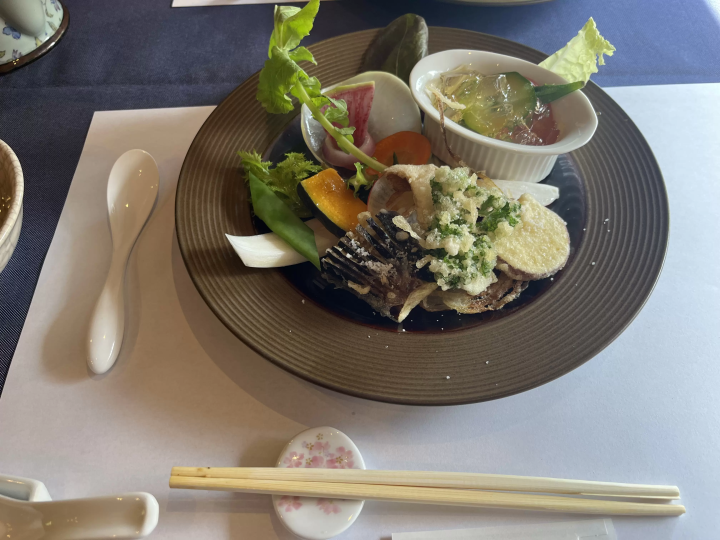Starbucks Coffee Kyoto Ninenzaka Yasaka Chaya: Access, Features, and Tips

Starbucks Coffee Kyoto Ninenzaka Yasaka Chaya is the world's first Starbucks store in a traditional Japanese house with tatami seating. We'll introduce the unique features of this location inspired by tea ceremony culture, along with tips on avoiding congested periods.
Visit the Starbucks Coffee Kyoto Ninenzaka Yasaka Chaya
The world-renowned coffee chain Starbucks Coffee has shops throughout Japan, with many concept stores inspired by local culture.
One famous location is Starbucks Coffee Kyoto Ninenzaka Yasaka Chaya, which opened on June 30, 2017. It's the first Starbucks located in a 100-year-old traditional Japanese house called a machiya.
The shop is located in Ninenzaka, a popular street in the Gion district that leads to the World Heritage-listed Kiyomizudera Temple.
This article introduces the unique features of this tatami-floored Starbucks Coffee store with tips on avoiding congested periods.
Guide Kyoto's Most Famous Starbucks Store
1. The First Starbucks Housed in a 100-Year-Old Building
2. Interior Features: A Japanse Space with a Relaxing Ambiance
3. Tips for Avoiding Crowds: How to Enjoy This Popular Cafe
4. Stay at a Nearby Stylish Kyoto Hotel
The First Starbucks Housed in a 100-Year-Old Machiya

From planning to opening, it took ten years to actualize Starbucks Coffee Kyoto Ninenzaka Yasaka Chaya.
Kyoto is no stranger to concept stores where visitors can immerse themselves in a traditional Japanese atmosphere. This includes the Kyoto Karasuma Rokkaku store near Rokkakudo Temple, where ikebana originated, alongside the Kyoto Sanjo Ohashi shop with a riverside terrace by the Kamo River.
The Starbucks project team wanted to create a "one-of-a-kind shop that conveys the culture and history of Kyoto more than ever before."
The building chosen for the store was a traditional machiya-style Kyoto building over 100 years old. Machiya buildings have wooden interiors and an elongated shape. Reforming the structure into a stylish coffee shop wasn't an easy feat.
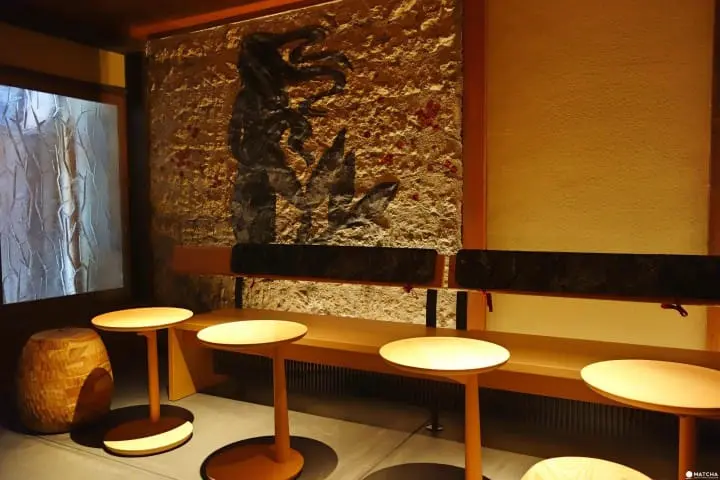
The two-storied Yasaka Chaya store boasts 51 seats. The first floor is furnished with chairs, while tatami seats are on the second floor. You will need to take off your shoes to sit in the tatami-floored room.
One thing to remember is that waiting outside is not allowed. People lining outside the shop get in the way of passersby, so Kyoto Ninenzaka Yasaka Chaya prohibits it. If you want to wait, first go inside the store and consult a staff member.
Interior Features: A Relaxing Ambiance Inspired by Tea Ceremony Culture
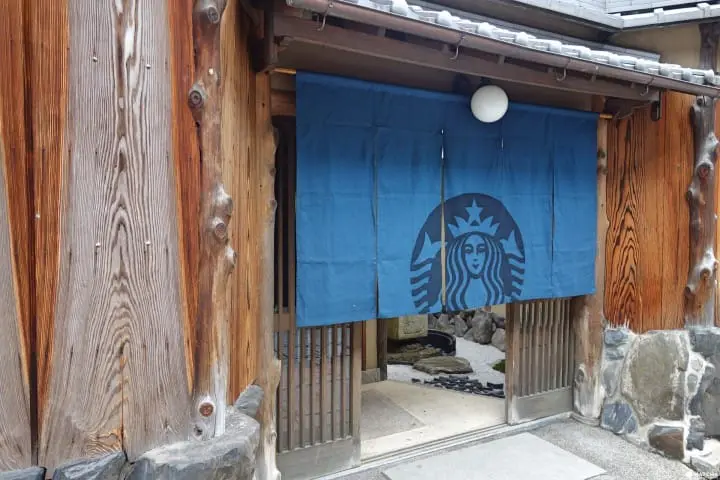
The exterior of the shop may appear modest. You might even pass by it if you're not on the lookout. It's nestled on a street with an outward appearance that doesn't stand out at all.
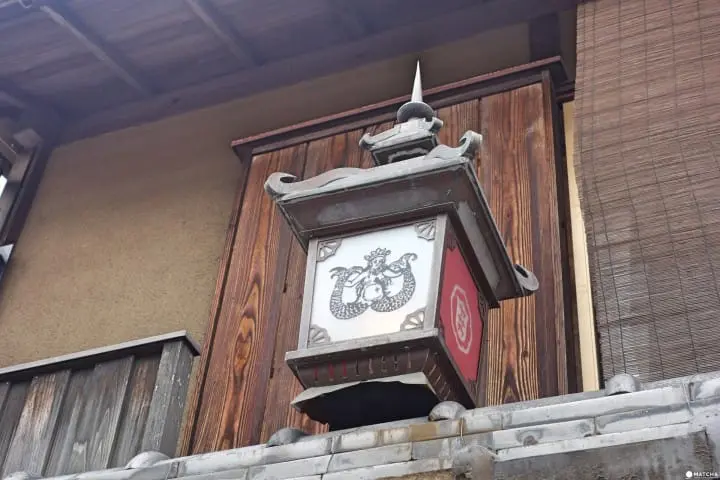
In addition to noren curtains at the entrance, there's a lantern with the coffee chain's logo.
An Elegant Garden Created by Tea Ceremony Masters
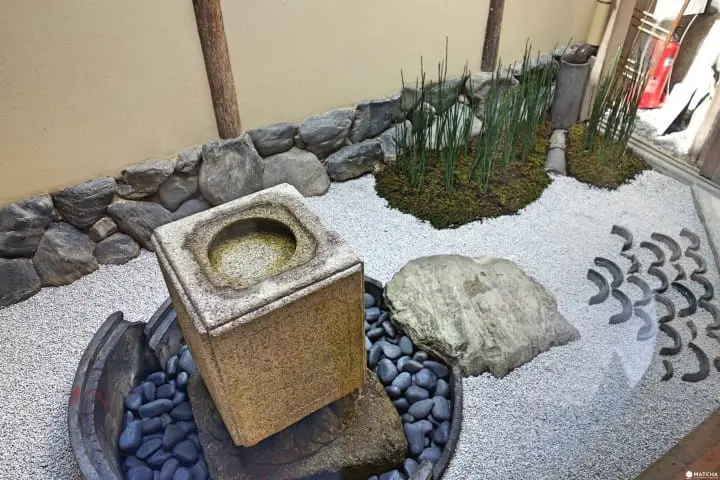
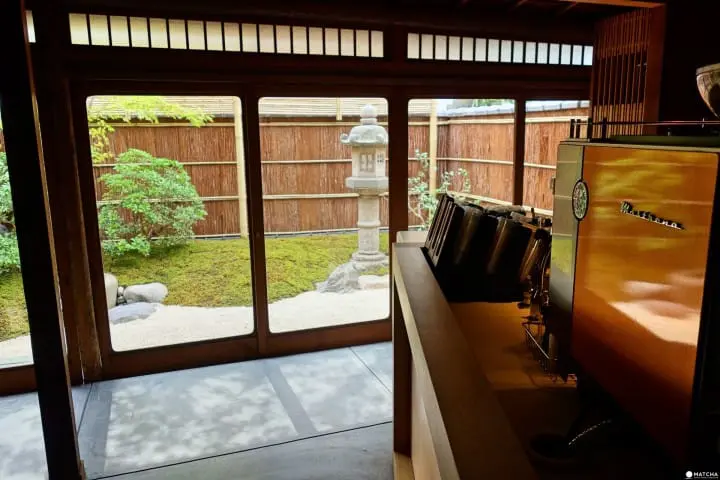
In the front yard on the first floor, you'll find a tsukubai (*1) created with a rock arrangement from one of Kyoto's famous tea ceremony schools: the Omotesenke.
The tsukubai water basin is an essential element in Japanese gardens.
*1 Tsukubai: an item used to decorate Japanese gardens with a small water basin.
Experience a Japanese Tea Room and Tatami Seats
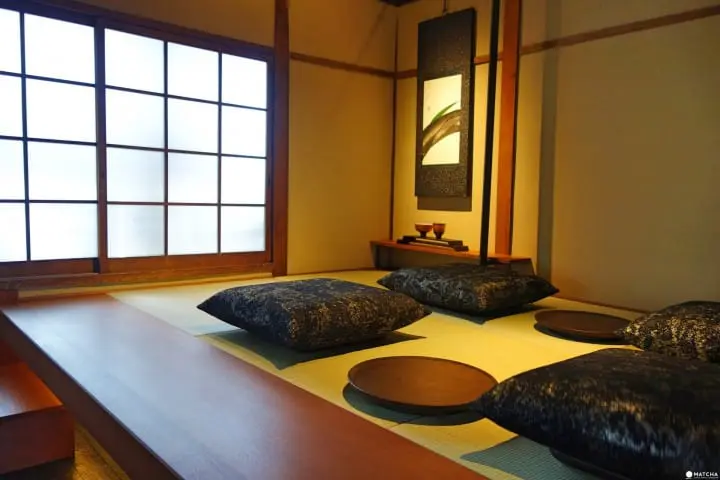
In addition to the exterior, the shop's interior is decorated in detail. The hanging scroll found on the wall of the tatami room is inscribed with the word "Toki" (Time).
You can envision the merging of roasted dark brown coffee beans and springwater flowing over a thousand years.

The artwork in the back is called "Taki" (Waterfall).
It is said to be based on cascading coffee droplets and the Otowa Waterwall at Kiyomizudera Temple.
Tips for Avoiding the Crowds: How to Enjoy This Popular Cafe
Starbucks Coffee Kyoto Ninenzaka Yasaka Chaya is extremely popular and bustling with customers. With the high demand for coffee in a scenic location, the wait time may be longer than the average Starbucks Coffee store.
The great news is that there is a way to skip standing in a queue! You can use Mobile Order & Pay (Japanese), an official service developed by Starbucks Coffee.
By using this smartphone app, visitors can cut down on time spent ordering beverages and snacks to gain extra time enjoying this unique atmosphere.
According to recent Google Maps reviews, seats can be easily secured without crowds by visiting the cafe at 8:00—right after opening time. Why not visit early and enjoy a soothing cup of coffee at this gorgeous Starbucks?
Otherwise, come prepared to wait until your coffee is ready and appreciate the store's atmosphere while inside.
Stay at a Nearby Stylish Kyoto Hotel
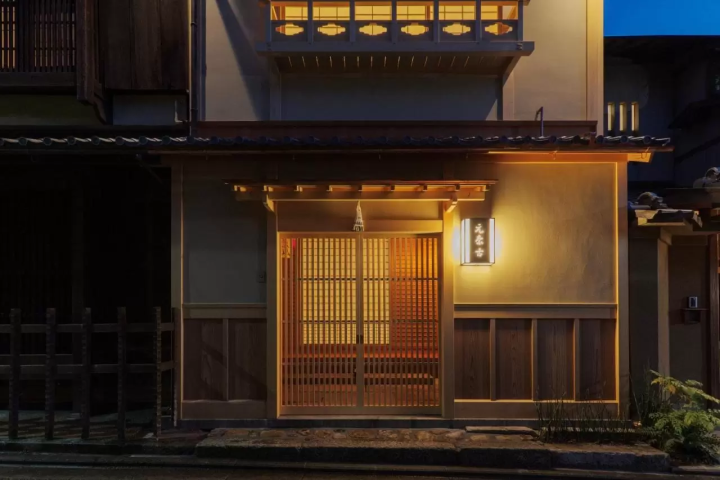
Picture courtesy of Booking.com
There are many excellent hotels and ryokans (traditional-style Japanese inns) nearby Ninenzaka and Kiyomizudera Temple exuding the elegant ambiance Kyoto is famed for. When visiting Kyoto Ninenzaka Yasaka Chaya, you'll definitely want to stay in this neighborhood!
Why not book a hotel nearby this Starbucks Coffee and take full advantage of this amazing location?
We recommend staying at Ryokan Motonago: a Japanese inn featured in the Michelin Guide.
Ryokan Motonago is about 13 minutes on foot from the tatami-floored Starbucks Coffee store and five minutes from Kiyomizudera Temple. This traditional-style ryokan offers cozy rooms, a large public bath, and delicious traditional Kyoto cuisine. Feel completely immersed in the local culture during your next stay in the heart of Kyoto at Ryokan Motonago, built in a convenient and scenic location!
For other hotel recommendations near the Starbucks Coffee Kyoto Ninenzaka Yasaka Chaya, check the article linked below:
Book an Accommodation in Kyoto on Booking.com
NINJA Pocket Wi-Fi: Secure Internet Connection in Kyoto
Although free Wi-Fi is available in Kyoto, we suggest using pocket Wi-Fi for a safe and amazing journey in Japan! Pocket Wi-Fi is extremely convenient and can be taken to any region, any location, and is accessible at any time nationwide.
Take advantage of MATCHA's NINJA Wi-Fi coupon! You'll receive a 20% discount, ensuring a satisfying trip without being disturbed by weak Wi-Fi. Please refer to this MATCHA article for more details.
Enjoy Your Time at Kyoto's Most Famous Starbucks
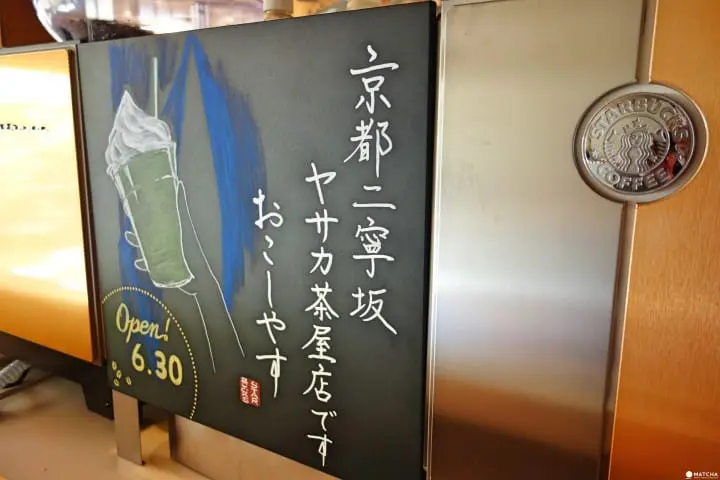
This is the first Starbucks in the world with tatami seats. If you love the historical city of Kyoto, we recommend stopping by this Starbucks coffee shop steeped in Japanese culture.
Book the JR Pass for Whole Japan
FAQ
Where is the oldest Starbucks in Japan?
The oldest Starbucks in Japan is located in Tokyo's bustling Ginza district. This Starbucks store, which originally opened in August 1996, holds the distinction of being the first Starbucks to operate in the country. Additionally, it is conveniently situated near the iconic Wako building and the Ginza Mitsukoshi department store.
What is the best time to visit Ninenzaka?
The best time of day to visit Ninenzaka is either early in the morning or in the evening. These times offer a quieter and more peaceful experience compared to the bustling midday hours. Early morning visits allow for tranquil strolls along the historical street, providing opportunities for leisurely exploration and photography without the crowds. Alternatively, visiting in the evening provides a chance to experience the area's traditional ambiance amid the soft glow of lanterns and illuminated storefronts.
What is tatami in Japanese culture?
In Japanese culture, tatami refers to a type of mat typically made from rice straw and woven with rush grass. These mats are a traditional type of flooring in Japan and are commonly used in traditional Japanese-style rooms known as washitsu. Tatami mats are known for their distinctive scent and are often used in tea rooms, meditation spaces, and other traditional settings. They also play a significant role in determining the layout of a room, as the dimensions of a traditional Japanese room are often measured by the number of tatami mats required to cover the floor. Tatami mats are deeply ingrained in Japanese culture, symbolizing traditional living, spirituality, and a connection to nature.
What is Kyoto best known for?
Kyoto is celebrated for its rich historical and cultural heritage, boasting well-preserved temples, Shinto shrines, traditional wooden machiya houses, and vibrant historic districts like Gion and Higashiyama. The city is also renowned for traditional arts such as tea ceremonies and Noh theater, as well as its breathtaking seasonal beauty during the cherry blossom and autumn foliage seasons. Its former status as the imperial capital of Japan for over a millennium until 1868 underscores its profound influence in shaping the nation's history, culture, and traditions.
Where is Japan's biggest Starbucks?
The largest Starbucks in Japan is the Starbucks Reserve Roastery in Nakameguro, Tokyo. It is a four-story building offering a unique and immersive coffee experience, featuring various brewing methods, a bakery, and a coffee roasting area.
hiko,在別的地方被人稱作「周魚民的老闆」,平時在京都活動(嚴格地說只有在京都大學跟自宅間折返)。到日本唸書之後就放棄一百名城攻略,轉而研究日本飲食文化,特愛近江牛,目前正在研究拉麵與日本酒。
































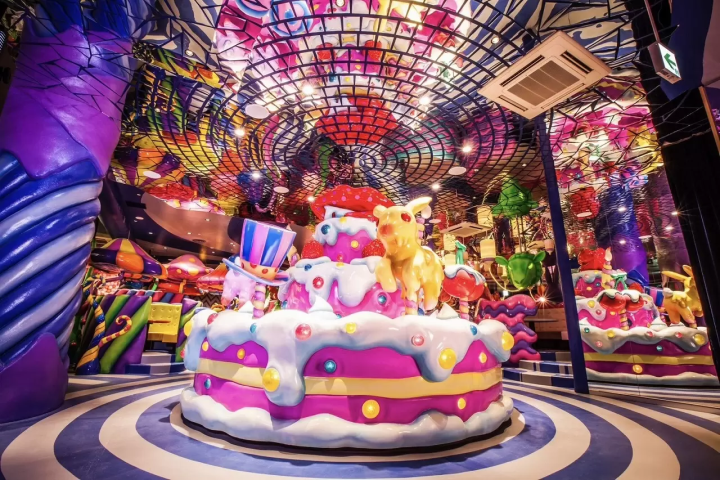
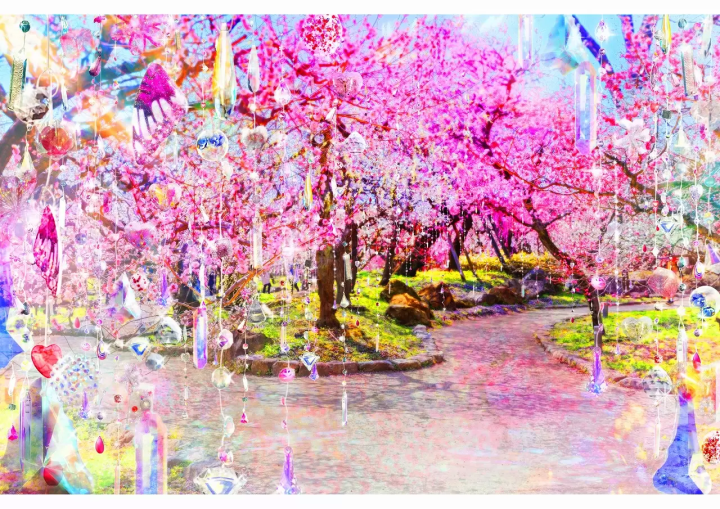
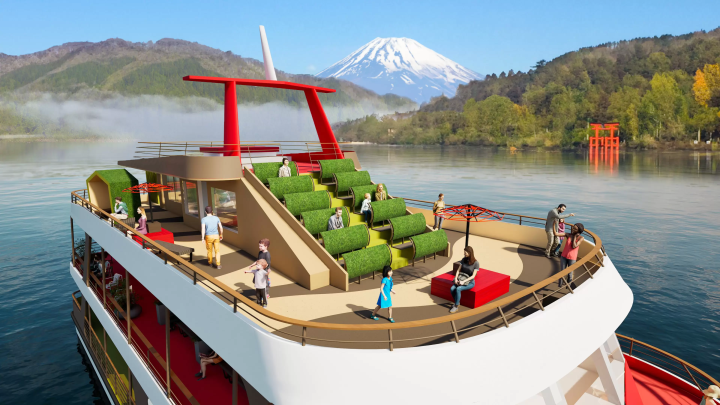

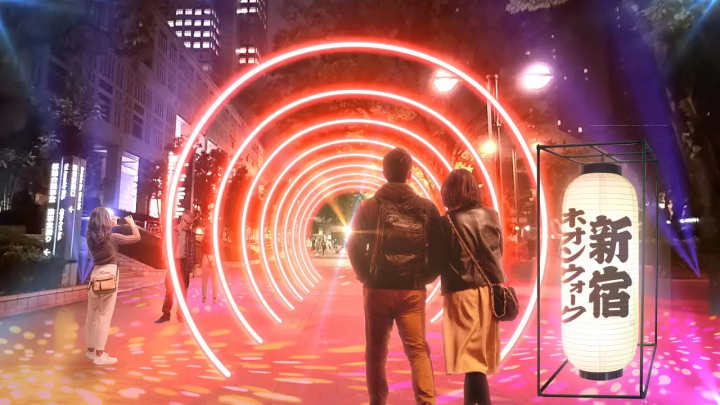






![[2-Day, 1-Night Kyoto Tour - Part 1] Enjoy gourmet food and tableware in Gojo! Recommended itinerary](https://resources.matcha-jp.com/resize/720x2000/2025/09/18-244615.webp)
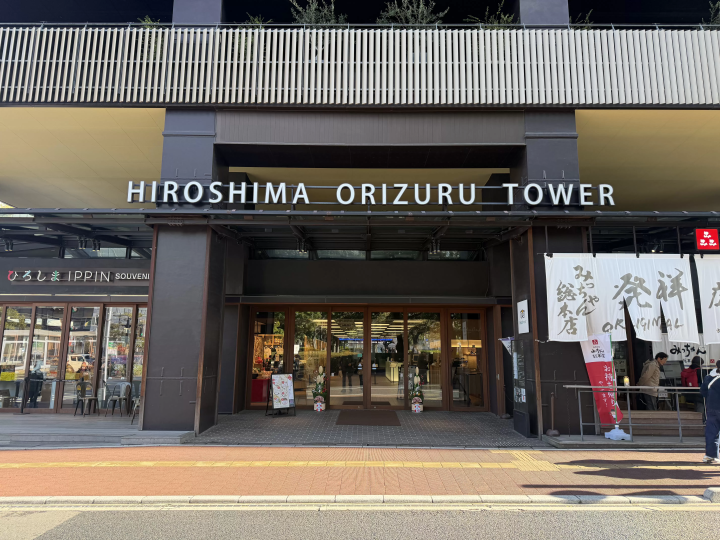
![[Coupons available] We're open even during the New Year holidays! We'll bring you information on our New Year's sale!](https://resources.matcha-jp.com/resize/720x2000/2025/12/26-254137.webp)
